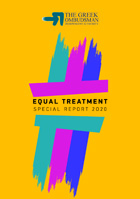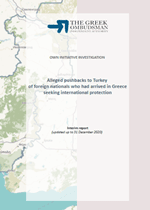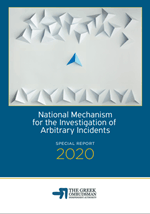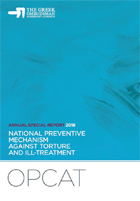Processing Citizens' complaints
Complaints received by the Ombudsman are entered in the electronic protocol. This allows the progress of each case to be followed easily and also ensures the essential control and transparency in the operation of the institution.
Once the complaint has been registered in the electronic protocol, it is given a preliminary examination and assigned to the relevant department. A letter is then sent to the complainant, informing him or her of the name and telephone number of the Investigator who has undertaken the case.
The case-handler then ascertains if there are any reasons for which the complaint falls outside the Ombudsman's jurisdiction, as defined in the law establishing the Ombudsman. If this is the case, a letter is sent to the complainant referring him or her, whenever possible, to the relevant service or suggesting how the problems submitted to the Ombudsman may be addressed. If the case does fall within the Ombudsman's jurisdiction, the case-handler proceeds with a thorough investigation, which includes:
- Collecting the pertinent legislation, possibly in collaboration with the responsible public service or agency.
- Possibly requesting additional information from the complainant.
- Requesting information, documents, or other material relevant to the case from the public service concerned.
Other possibilities are :
- Interviewing individuals.
- Conducting on the-spot-investigations.
- Establishing a commission of experts.
The Public Administration Investigators-Inspectors Authority may also be asked to assist in the investigation.
If, after studying the assembled documentation, the case-handler does not find evidence of any illegality or maladministration, the complainant is informed and the case file is deposited in the archives. If, however, this is not the case, proposals and recommendations are made to the service concerned. Subsequent steps in the handling of the case depend on how these recommendations are (or are not) adopted.
If the response from the service concerned is not satisfactory, the Ombudsman draws up a report, which is submitted to the service and to the responsible minister, so that s/he can take action if s/he so chooses. At the same time, the complainants are kept informed. The Ombudsman may set deadlines by which the administration should adopt his recommendations. The Ombudsman also has the possibility, at his discretion, to make public the stance of the service with regard to the institution's recommendations.
If, during the course of the investigation, the service refuses to collaborate with the Ombudsman or if there are sufficient indications of criminal acts, the Ombudsman may initiate disciplinary proceedings or refer the case to the public prosecutor.
At all stages, the investigation is recorded and classified. Together with the use of modern technology (local networks, scanning), this makes it possible to handle cases more quickly and ensures accurate statistical conclusions in the future.
Finally, the Ombudsman may, on his own initiative, investigate any case which has aroused public interest.












